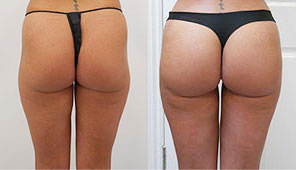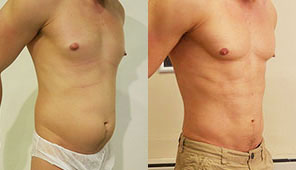Microneedling
Offered at our convenient location in London
Microneedling, also called Collagen Induction Therapy (CIT) is a type of minimally invasive dermal treatment that boosts the skin’s natural production of collagen and elastin. These proteins are vital to providing structure to the dermis, the second layer of skin responsible for its elasticity, rigidity, and ability to heal wounds. Microneedling stimulates the fibroblast cells of this layer of skin through micro injuries, causing the release of more connective proteins that revitalize the skin. This process results in anti-ageing benefits, scar reduction, and overall improvements in skin texture.
Though modern methods of microneedling have been studied for more than 100 years, vastly more advanced techniques and devices have been developed since. Since microneedling leaves the first layer of the skin, the epidermis, unharmed, it significantly reduces downtime and lowers the risk of negative side effects. (1)
As the only surgical teacher for the practice of VASERsmooth in Europe, Dr Grant Hamlet is an elite cosmetic surgeon who prioritizes patients’ satisfaction and safety. Dr. Hamlet and the staff with Dr. Grant Hamlet are well-equipped to understand the cosmetic improvements that can be accomplished with microneedling. Call our location in London at 0207 127 4377 or schedule your consultation appointment online through our contact form to find out more.
Contents
History of Microneedling
In 1905, Dermatologist Ernst Kromayer developed the first microneedling device by accident after looking to design a skin exfoliator. The first device was primitive and the needles were not as thin as they are today. He soon began treating his patients with this device, noticing that it effectively reduced scars and birthmarks.
In 1997, Dr. Andre Camirand took the next revolutionary step in microneedling treatments. Through the use of much thinner tattoo needles, he designed the first microneedling “stamp”. In 2006, Dr. Desmond Fernandes developed the first ever microneedling rolling device- known today as the derma roller. (2) Dr. Grant Hamlet uses an updated version of the derma roller for all microneedling procedures. Today, many kinds of derma rollers are available for purchase, but only a doctor with extensive knowledge understands the implications of various needle diameters and depths. Dr. Hamlet will be able to provide a custom experience that isn’t possible with over-the-counter devices.
Benefits of Microneedling
Many patients opt for microneedling over other procedures due to its ability to treat many aesthetic issues at the same time, such as: (3)
- Fine lines
- Age spots
- Large pores
- Uneven texture and tone
- Atrophic scars
- Acne scars
- Hyperpigmentation caused by other procedures
As a minimally invasive procedure, it yields many other benefits to look forward to:
- On average, the procedure takes about 15-20 minutes.
- It stimulates the production of connective proteins for months.
- It can be performed on almost any area of the body.
- It only requires 1 to 3 days of downtime.
- Local anaesthesia isn’t required, only a topical numbing cream.
Personal Consultation
During a personal consultation with Dr Hamlet, he will evaluate the quality of your skin and give you an idea of what cosmetic results to expect from derma roller treatments. A consultation is an opportunity to voice your specific concerns and have them addressed with microneedling or another procedure that is geared toward your aesthetic goals. To get started feeling amazing about your skin, give us a call at 0207 127 4377, request a consultation online, or stop by our location at Highgate Private Hospital.
Preparation
The team with Dr. Grant Hamlet will give you step-by-step instructions in order to properly prepare for your microneedling session. The general rule is that you should avoid exfoliating and harsh soaps in the days before your scheduled appointment. You should consult Dr Hamlet on which types of skin care products to avoid and any medications that can increase sensitivity in the skin.
If you experience a viral or acne outbreak before your treatment, you may need to reschedule and follow Dr Hamlet’s next steps for your specific case. Keeping your skin calm and healthy beforehand will allow it to heal well and help prevent the possibility of infection. 24 hours before your session, you should stop drinking both caffeine and alcohol and focus on staying hydrated with water.
Microneedling Procedure
Before your skin expert applies the derma roller, they will first cleanse your face of all makeup residues and oils to prevent infection. Next, they will administer a topical numbing cream to your skin to make the procedure as comfortable as possible. It usually takes about 45 minutes to 1 hour for the numbing effect to kick in. Finally, they will begin rolling the derma roller onto your skin, making several passes over the same area before moving on to the next treatment spot. It’s normal for there to be a small accumulation of blood, but you shouldn’t feel any discomfort. The sterile needles of the derma roller may penetrate only 0.5 mm in areas with thinner skin, such as the forehead. For deeper scars and thicker skin nearer to the cheeks, the needles may penetrate up to 2 mm. (3)
With multiple treatments of the derma roller, the microneedles not only invoke collagen and elastin production, but they mechanically work to rearrange the collagen-elastin matrix. Within scar tissue, these proteins are organized in a parallel fashion, while in healthy skin tissue, they are organized in a lattice formation. Derma rollers have been shown to help redistribute these connective proteins in a normal formation to help the scars fade. (3)
How Many Microneedling Treatment Sessions Are Needed?
Most patients will see the most significant improvements after at least 3 microneedling sessions. For the treatment of atrophic scars, roughly 4 to 6 sessions are optimal. Research has found that after 4 sessions of microneedling, spaced by 4 weeks in between, increased collagen production by 400%. (3)
Recovery
In the first few days of recovery, you may experience some minor bleeding, warm sensations, itchiness, tightness, and some swelling. Although you can go back to work immediately, you should avoid using makeup, exfoliators, sun exposure, and touching your face. Dr. Hamlet may prescribe medication to prevent infection and a moisturizer to combat dryness and promote healing. You may use an ice pack, but most patients find that discomfort subsides in just a couple of days. After around 3 days, you’ll be able to resume your exercise routine.
Corresponding & Complementary Procedures
While microneedling procedures are affordable, quick, and relatively easy, There are a wide variety of treatments that may be better suited to your needs, including those we mention in our blog. Here are some of our other dermal treatments to consider:
- Teosyal is a hyaluronic acid-based (HA) dermal injection to reduce deep wrinkles, volumize hollow creases, and rehydrate the skin. Hyaluronic acid is already naturally present in the body; it allows the skin to retain moisture, and it provides lubrication for the joints.
- Botox is a neuromodulator, meaning that it modifies the function of facial muscles. Botox temporarily blocks the transmission of acetylcholine which is responsible for muscular contraction. The strategic targeting of certain facial muscles allows for the skin to relax and smooth out- effectively eliminating wrinkles.
- Dermal fillers we offer are made of either hyaluronic acid or poly-L-lactic acid, completely biocompatible and biodegradable ingredients. Poly-L-lactic acid is a synthetic filler that stimulates collagen production as the body metabolizes it into carbon dioxide and water. (4)
- Ultherapy is a non-invasive method of utilizing ultrasonic waves for anti-ageing benefits. The thermal energy allows collagen fibres to retract and provide a skin-tightening effect.
Cost of Microneedling in London
The cost of your microneedling treatment will mostly depend on the number of sessions you receive. After your personal consultation, Dr. Hamlet will offer you an estimate for your treatment.
Find the most effective non-surgical skin treatments for your skin by Dr. Grant Hamlet at 0207 127 4377. Alternatively, reach out to us online about our diverse range of services.
FAQ
When can I expect to see the results of microneedling?
About 1 week after your first session, you should begin to see results. The increased production of collagen and elastin, however, will continue for the next 3 to 6 months.
How long do the results of microneedling last?
The results of microneedling last 3 to 6 months, but it depends heavily on the quality of your skin, your age, and your unique metabolism. For people over 40, they may need additional touch-up sessions every 4 months or so to maintain their results.
Is microneedling painful?
Before every microneedling session, your aesthetician or doctor will apply a topical cream so that the procedure is comfortable. After your treatment, they will prescribe a soothing moisturizer and allow you to apply ice if needed.
References
- El-Domyati M, Barakat M, Awad S, Medhat W, El-Fakahany H, Farag H. Microneedling Therapy for Atrophic Acne Scars: An Objective Evaluation. J Clin Aesthet Dermatol. 2015;8(7):36-42. https://www.ncbi.nlm.nih.gov/pmc/articles/PMC4509584/pdf/jcad_8_7_36.pdf
- Doddaballapur S. Microneedling with dermaroller. Journal of Cutaneous and Aesthetic Surgery. 2009;2(2):110. doi:https://doi.org/10.4103/0974-2077.58529
- Yadav S, Singh A. Microneedling: Advances and widening horizons. Indian Dermatology Online Journal. 2016;7(4):244. doi:https://doi.org/10.4103/2229-5178.185468
- Sickles CK, Nassereddin A, Gross GP. Poly-L-Lactic Acid. PubMed. Published 2021. https://www.ncbi.nlm.nih.gov/books/NBK507871/






